Royal
Hospital for Neuro-Disability
West Hill, Putney, SW15 3SW
Medical
dates:
Medical
character:
Long-term care
The Hospital for Incurables was
founded in July 1854 following a public meeting at the Mansion House,
chaired
by the Lord Mayor of London. Its founder, Revd Dr Andrew
Reed (1787-1862), was a practical philanthropist who had
previously established the London
Orphan Asylum (1813), the Infant
Orphan Asylum (1827), the Asylum for
Fatherless Children (later renamed the Reedham Orphanage) in
Coulsdon (1843) and the Asylum for Idiots
in Earlswood (1847).
Dr Reed had perceived a need for a permanent home for those middle-class patients who were "hopelessly disqualified for the duties of life, by disease, accident or deformity". Patients with incurable conditions were not admitted to voluntary hospitals: any such patients admitted in an acute state were discharged as soon as possible. Paupers were sent to workhouse infirmaries, but those above the pauper-class had nowhere to go. The Hospital for Incurables was established to provide continuing care for this group of people. Those who could be cared for at home, but with no means of financial support, would receive a pension of £20 a year.
In 1855 a converted workhouse in the village of Carshalton was leased, and the first 4 inmates were admitted. In its first year, the Hospital received £1,874 in donations (including a single one of £1,000).
As the demand for its services grew and with no possibility of expansion in its current site, in 1857 the Hospital relocated temporarily to a large mansion, Putney House, in Richmond Road (now Upper Richmond Road).
In 1858 Dr Reed and the Board of Management began to search for more suitable premises. A site in Coulsdon was suggested, as Dr Reed's Asylum for Fatherless Children was already located there. However, there was a divergence of views among the members of the Board as to the suitability of the place. Some found Coulsdon was too far from London. With its high altitude (180 metres above sea level), the land was exposed and unsheltered by trees, and the ground was irregular, making it unsuitable for many of the patients.
In the event, in 1860, a dozen members of the Board seceded - and founded their own institution, the British Home and Hospital for Incurables in Clapham Rise.
After this schism, the plan to relocate to Coulsdon was abandoned and a new site searched for elsewhere.
By 1861 the accommodation at Putney House had also become inadequate and an annexe was found in the immediate neighbourhood to house the increasing number of patients, who suffered from a variety of disorders.
In 1863 the Board of Management finally found a suitable property to use as a permanent home - Melrose Hall, on West Hill, Putney.
The Hall, with 23.5 acres of land, was purchased for £18,000. Part of the gardens had been planned by Capability Brown (1716-1783) and later improved by Humphrey Repton (1752-1818). The estate had its own farm, complete with cows, sheep, pigs and poultry. An orchard and a market garden were added to provide produce for the patients and staff.
In 1864 the female patients were transferred from Putney House and, in the following year, the male patients (the Hospital had 81 patients, of whom three-quarters were female. Men and women were strictly segregated). Work began on a north wing in July 1867, with the foundation stone laid by Lady Elcho. In 1868 a south wing was added, at a cost of £11,463.
In 1871 a parsonage site of 1.5 acres was acquired for £1,400.
By 1878 the Hospital had 200 beds, with an average of 150 patients in residence, and 300 pensioners, who lived in their own homes but received a pension from the charity. Being unendowed, the Hospital was entirely financially dependent on voluntary subscriptions and donations from the public.
In 1879 the foundation stone for a new wing was laid by the Prince of Wales. In 1880, when the Hospital had 181 patients, the Prince became its Patron.
The new wing - the Great Extension - was officially opened in 1882 by the Duke of Connaught and Strathearn. The building, whose northern facade ran along West Hill, contained offices, an Assembly Room, a dining room, a kitchen and a bakery, as well as a hydraulic lift (operated by hand) and the central heating boilers. It had cost £37,618 to build - double the original estimate. The Hospital had 221 patients in residence.
In 1885 a holiday home - Seaside House - was established for the inmates (and later pensioners) in St Leonard's-on-Sea. (The house was sold in 1901.)
By 1890 the Hospital had 217 inmates and 664 pensioners.
In 1892 a new laundry was added.
In 1898 seven ladies were nominated to be 'Authorised Lady Visitors'. Their duties were to visit four to six patients a week and assist them to write letters, or read to them, or play cards. A Ladies Association was also established to collect funds to help 'unbefriended' (unsponsored) candidates who needed long-term care but did not have the financial support to gain admission to the Hospital.
In 1900 the minimum age limit for patients was increased from 20 to 30 years.
In 1901 the foundation stone was laid for a new wing to the east of the Great Extension. In 1903 the Hospital was renamed the Royal Hospital for Incurables.
In 1906 the very first patient to have entered the Hospital died. She had been admitted as a 29-year-old and had survived - paralysed and bedridden - for 51 years.
The new wing - the Restall Wing - was completed in 1909. It had 28 beds. The hydraulic lifts in the Great Extension were replaced by electrically operated ones.
In 1917 the Hospital was renamed the Royal Hospital and Home for Incurables, receiving its Royal Charter two years later.
On 12th May 1920 Princess Mary laid the foundation stone for a new Nurses' Home. But the scheme was abandoned due to lack of funds. Instead, two large houses in West Hill were rented for use as a Nurses' Home (the nurses up to that time having lived in the Hospital itself).
In 1930 the mens' and womens' Dining Rooms were extended and merged together.
In 1935 the Nurses' Home, with 80 rooms, was finally built behind the neighbouring Holy Trinity Church. It was officially opened by the Duchess of York.
During the 1930s the Hospital farm was closed.
At the outbreak of WW2 in 1939 some 42 patients were evacuated to friends or relatives outside London. Several more left over the following two years as, by 1941, the Hospital was suffering from a serious shortage of staff. In 1944, because of the threat from V1 rockets, 72 patients were evacuated to Lennoxtown, Glasgow. The remaining 108 patients were accommodated on the ground floor and in the basement of the Hospital.
At the end of the war in 1945 the evacuated patients returned.
In 1947 the Hospital was informed that it would be nationalised under the NHS Act (1946), along with the Jewish Hospital and Home for Incurables in Tottenham and the British Home and Hospital for Incurables in Streatham. All three homes appealed against this on the grounds that they would be able to provide more specific care to their patients, focussed on long-term needs. In 1950 the Ministry of Health withdrew its claims and all three remained independent.
By 1954 the Hospital had 260 patients, and 250 pensioners, who received a small annuity.
In 1956 there were 249 patients.
In 1960 some 14 patients taking part in Occupational Therapy were offered paid employment for three hours a day by the toy company Lines Bros, thus enabling them to gain a
a small income.
In 1961 a new male ward with 5 beds was built over the men's verandah at a cost of £10,000. In 1963 Wandsworth Borough Council compulsorily purchased 10.5 acres of land south of the Hospital for £325,000. The money was spent on improving the wards, laundry and boiler room. In 1965 more staff accommodation in apartments was added. The Hospital was further modernised in 1967, when it had 221 beds. A day service was launched.
In 1970, due to industrial unease, the Hospital's supply of electricity was disrupted. Emergency lighting and power was then installed, while the modernisation programme continued.
By the beginning of the 1970s the Hospital was caring for patients suffering from multiple sclerosis, arthritis, Parkinson's disease, congenital spastic paralysis or hemiplegia.
In 1974 John Howard House in Roedean Road, Brighton, was donated to the Hospital as a holiday home for patients to have a break by the sea. (It was sold in 1997).
In 1976 a new extension was built to the west of the main building. It was named the Chatsworth Wing. In 1980 Alexandra Wing was built to the east.
In 1985 another new extension - Drapers Wing - was added to the east at a cost of £1.3m. It was officially opened by the Queen. It was intended to be a rehabilitation centre to enable patients to regain skills so they could lead as independent a life as possible and thus prevent them from becoming permanent residents. It contained an in-patient unit of 20 beds, a Day Hospital with 10 places, a functional assessment unit, an engineering workshop for making wheelchairs and a large gym. A Brain Injury Unit was also opened at the Hospital, the first in the country.
In 1987, due to an increasing number of patients with the condition, a Vegetative State Unit opened. It was unique in the United Kingdom.
In 1988 the Hospital dropped the words 'for Incurables' from its title, and became the Royal Hospital and Home, Putney.
In 1993 the Hospital opened the first Transitional Rehabilitation Unit in the United Kingdom. The Unit enabled patients with acquired brain injuries to regain sufficient skills so they could return to independent living.
In 1995, to better reflect the type of patients now being cared for, that is, those mainly suffering from neurological disorders, the Hospital changed its name again - to the Royal Hospital for Neuro-Disability.
In 1995 Goodman House was built to the southeast of the site, near where the farm had been.
In 1997 the Neuro-Behavioural Rehabilitation Unit opened to provide rehabilitation for those patients with acquired brain injuries who had developed challenging behaviours and thus were excluded from mainstream rehabilitation centres.
The Institute of Complex Neuro-Disability opened in 2003 as a research and educational establishment to provide facilities for the study of the profound and complex disabilities caused by disease or damage to the brain or other parts of the nervous system. It was later renamed the Institute of Neuropalliative Rehabilitation.
Present status (July 2008)
The Hospital has 260 beds and continues to be run by a medical charity. It provides assessment, rehabilitation, treatment and long-term care for patients over the age of 18 years with severe neurological damage due to disease or trauma. A number of soldiers with brain injury acquired while serving in Afghanistan are also resident at the Hospital.
Dr Reed had perceived a need for a permanent home for those middle-class patients who were "hopelessly disqualified for the duties of life, by disease, accident or deformity". Patients with incurable conditions were not admitted to voluntary hospitals: any such patients admitted in an acute state were discharged as soon as possible. Paupers were sent to workhouse infirmaries, but those above the pauper-class had nowhere to go. The Hospital for Incurables was established to provide continuing care for this group of people. Those who could be cared for at home, but with no means of financial support, would receive a pension of £20 a year.
In 1855 a converted workhouse in the village of Carshalton was leased, and the first 4 inmates were admitted. In its first year, the Hospital received £1,874 in donations (including a single one of £1,000).
As the demand for its services grew and with no possibility of expansion in its current site, in 1857 the Hospital relocated temporarily to a large mansion, Putney House, in Richmond Road (now Upper Richmond Road).
In 1858 Dr Reed and the Board of Management began to search for more suitable premises. A site in Coulsdon was suggested, as Dr Reed's Asylum for Fatherless Children was already located there. However, there was a divergence of views among the members of the Board as to the suitability of the place. Some found Coulsdon was too far from London. With its high altitude (180 metres above sea level), the land was exposed and unsheltered by trees, and the ground was irregular, making it unsuitable for many of the patients.
In the event, in 1860, a dozen members of the Board seceded - and founded their own institution, the British Home and Hospital for Incurables in Clapham Rise.
After this schism, the plan to relocate to Coulsdon was abandoned and a new site searched for elsewhere.
By 1861 the accommodation at Putney House had also become inadequate and an annexe was found in the immediate neighbourhood to house the increasing number of patients, who suffered from a variety of disorders.
In 1863 the Board of Management finally found a suitable property to use as a permanent home - Melrose Hall, on West Hill, Putney.
The Hall, with 23.5 acres of land, was purchased for £18,000. Part of the gardens had been planned by Capability Brown (1716-1783) and later improved by Humphrey Repton (1752-1818). The estate had its own farm, complete with cows, sheep, pigs and poultry. An orchard and a market garden were added to provide produce for the patients and staff.
In 1864 the female patients were transferred from Putney House and, in the following year, the male patients (the Hospital had 81 patients, of whom three-quarters were female. Men and women were strictly segregated). Work began on a north wing in July 1867, with the foundation stone laid by Lady Elcho. In 1868 a south wing was added, at a cost of £11,463.
In 1871 a parsonage site of 1.5 acres was acquired for £1,400.
By 1878 the Hospital had 200 beds, with an average of 150 patients in residence, and 300 pensioners, who lived in their own homes but received a pension from the charity. Being unendowed, the Hospital was entirely financially dependent on voluntary subscriptions and donations from the public.
In 1879 the foundation stone for a new wing was laid by the Prince of Wales. In 1880, when the Hospital had 181 patients, the Prince became its Patron.
The new wing - the Great Extension - was officially opened in 1882 by the Duke of Connaught and Strathearn. The building, whose northern facade ran along West Hill, contained offices, an Assembly Room, a dining room, a kitchen and a bakery, as well as a hydraulic lift (operated by hand) and the central heating boilers. It had cost £37,618 to build - double the original estimate. The Hospital had 221 patients in residence.
In 1885 a holiday home - Seaside House - was established for the inmates (and later pensioners) in St Leonard's-on-Sea. (The house was sold in 1901.)
By 1890 the Hospital had 217 inmates and 664 pensioners.
In 1892 a new laundry was added.
In 1898 seven ladies were nominated to be 'Authorised Lady Visitors'. Their duties were to visit four to six patients a week and assist them to write letters, or read to them, or play cards. A Ladies Association was also established to collect funds to help 'unbefriended' (unsponsored) candidates who needed long-term care but did not have the financial support to gain admission to the Hospital.
In 1900 the minimum age limit for patients was increased from 20 to 30 years.
In 1901 the foundation stone was laid for a new wing to the east of the Great Extension. In 1903 the Hospital was renamed the Royal Hospital for Incurables.
In 1906 the very first patient to have entered the Hospital died. She had been admitted as a 29-year-old and had survived - paralysed and bedridden - for 51 years.
The new wing - the Restall Wing - was completed in 1909. It had 28 beds. The hydraulic lifts in the Great Extension were replaced by electrically operated ones.
In 1917 the Hospital was renamed the Royal Hospital and Home for Incurables, receiving its Royal Charter two years later.
On 12th May 1920 Princess Mary laid the foundation stone for a new Nurses' Home. But the scheme was abandoned due to lack of funds. Instead, two large houses in West Hill were rented for use as a Nurses' Home (the nurses up to that time having lived in the Hospital itself).
In 1930 the mens' and womens' Dining Rooms were extended and merged together.
In 1935 the Nurses' Home, with 80 rooms, was finally built behind the neighbouring Holy Trinity Church. It was officially opened by the Duchess of York.
During the 1930s the Hospital farm was closed.
At the outbreak of WW2 in 1939 some 42 patients were evacuated to friends or relatives outside London. Several more left over the following two years as, by 1941, the Hospital was suffering from a serious shortage of staff. In 1944, because of the threat from V1 rockets, 72 patients were evacuated to Lennoxtown, Glasgow. The remaining 108 patients were accommodated on the ground floor and in the basement of the Hospital.
At the end of the war in 1945 the evacuated patients returned.
In 1947 the Hospital was informed that it would be nationalised under the NHS Act (1946), along with the Jewish Hospital and Home for Incurables in Tottenham and the British Home and Hospital for Incurables in Streatham. All three homes appealed against this on the grounds that they would be able to provide more specific care to their patients, focussed on long-term needs. In 1950 the Ministry of Health withdrew its claims and all three remained independent.
By 1954 the Hospital had 260 patients, and 250 pensioners, who received a small annuity.
In 1956 there were 249 patients.
In 1960 some 14 patients taking part in Occupational Therapy were offered paid employment for three hours a day by the toy company Lines Bros, thus enabling them to gain a
a small income.
In 1961 a new male ward with 5 beds was built over the men's verandah at a cost of £10,000. In 1963 Wandsworth Borough Council compulsorily purchased 10.5 acres of land south of the Hospital for £325,000. The money was spent on improving the wards, laundry and boiler room. In 1965 more staff accommodation in apartments was added. The Hospital was further modernised in 1967, when it had 221 beds. A day service was launched.
In 1970, due to industrial unease, the Hospital's supply of electricity was disrupted. Emergency lighting and power was then installed, while the modernisation programme continued.
By the beginning of the 1970s the Hospital was caring for patients suffering from multiple sclerosis, arthritis, Parkinson's disease, congenital spastic paralysis or hemiplegia.
In 1974 John Howard House in Roedean Road, Brighton, was donated to the Hospital as a holiday home for patients to have a break by the sea. (It was sold in 1997).
In 1976 a new extension was built to the west of the main building. It was named the Chatsworth Wing. In 1980 Alexandra Wing was built to the east.
In 1985 another new extension - Drapers Wing - was added to the east at a cost of £1.3m. It was officially opened by the Queen. It was intended to be a rehabilitation centre to enable patients to regain skills so they could lead as independent a life as possible and thus prevent them from becoming permanent residents. It contained an in-patient unit of 20 beds, a Day Hospital with 10 places, a functional assessment unit, an engineering workshop for making wheelchairs and a large gym. A Brain Injury Unit was also opened at the Hospital, the first in the country.
In 1987, due to an increasing number of patients with the condition, a Vegetative State Unit opened. It was unique in the United Kingdom.
In 1988 the Hospital dropped the words 'for Incurables' from its title, and became the Royal Hospital and Home, Putney.
In 1993 the Hospital opened the first Transitional Rehabilitation Unit in the United Kingdom. The Unit enabled patients with acquired brain injuries to regain sufficient skills so they could return to independent living.
In 1995, to better reflect the type of patients now being cared for, that is, those mainly suffering from neurological disorders, the Hospital changed its name again - to the Royal Hospital for Neuro-Disability.
In 1995 Goodman House was built to the southeast of the site, near where the farm had been.
In 1997 the Neuro-Behavioural Rehabilitation Unit opened to provide rehabilitation for those patients with acquired brain injuries who had developed challenging behaviours and thus were excluded from mainstream rehabilitation centres.
The Institute of Complex Neuro-Disability opened in 2003 as a research and educational establishment to provide facilities for the study of the profound and complex disabilities caused by disease or damage to the brain or other parts of the nervous system. It was later renamed the Institute of Neuropalliative Rehabilitation.
Present status (July 2008)
The Hospital has 260 beds and continues to be run by a medical charity. It provides assessment, rehabilitation, treatment and long-term care for patients over the age of 18 years with severe neurological damage due to disease or trauma. A number of soldiers with brain injury acquired while serving in Afghanistan are also resident at the Hospital.
In 2010 Prince Edward opened Haberdashers House, an extension of the Transitional Rehabilitation Service, located in a residential estate outside the main site of the Hospital.
In 2013 the 16-bedded Jack Emerson Centre was officially opened by the former Paralympic basketball player, Ade Adepitan. The Centre provides a new ventilator service, made possible by a £500,000 donation by the Albert Reckitt Charitable Trust.
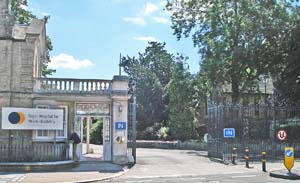
The main entrance at the western side of the site.
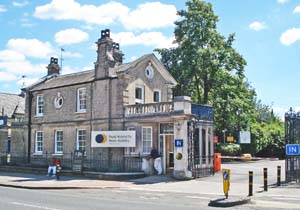
The Lodge at the western entrance.
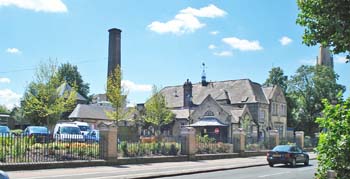
Buildings on the western part of the site (above and below).
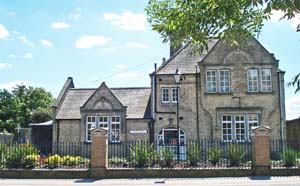
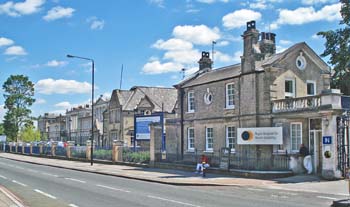
Looking at the northern facade of the Hospital along West Hill from the west.
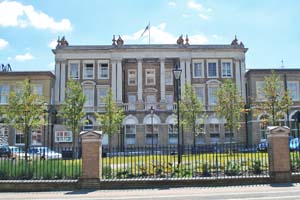
The northern elevation of one of the elegant wings. The Hospital has been extended eastwards and westwards over the years.
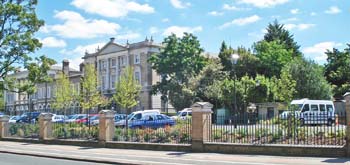
The Hospital as seen from the west (above) and from the east (below) along West Hill.
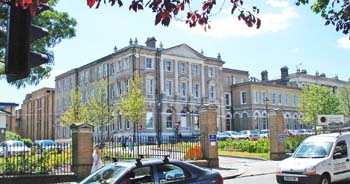
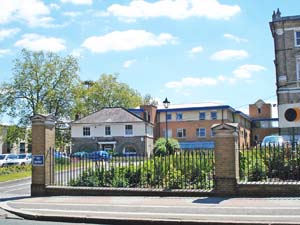
The eastern side of the site contains new buildings in a more modern style.
(Author unstated) 1867 Royal Hospital for Incurables. Sydney Morning Herald, 25th September.
(Author unstated) 1890 Death in life. Hawke's Bay Herald, 29th April.
(Author unstated) 1906 Long lived incurables. Boston Evening Transcript, 10th February.
(Author unstated) 1920 Nursing echoes. British Journal of Nursing, 28th February, 126.
(Author unstated) 1954 Royal Hospital and Home for Incurables. British Medical Journal 2 (4882), 298.
(Author unstated) 1985 New wing for the Royal Hospital and Home for Incurables. British Medical Journal 290 (6471), 865.
(Author unstated) 1988 In brief. British Medical Journal 296 (6623), 723.
Cook GC 2004 Caring for "incurables": the 150th anniversary of the Royal Hospital for Neuro-Disability, Putney. Postgraduate Medical Journal 80, 426-430.
Kiernan M 2011 The Hospital for Incurables. What's in a name? JNNP blog.
Stokes-Roberts AE 1967 A Short History of the Royal Hospital and Home for Incurables Putney. London, Royal Hospital and Home for Incurables.
http://archiseek.com
http://collage.cityoflondon.gov.uk
http://en.wikipedia.org
http://wellcomeimages.org
www.abil.co.uk
www.brainandspine.co.uk
www.british-history.ac.uk
www.flickr.com
www.geograph.org.uk
www.kcl.ac.uk
www.kensingtonandchelseatoday.co.uk
www.rhn.org.uk
www.rhncharity.org.uk
www.victorianlondon.org
www.yourlocalguardian.co.uk
Return to home page